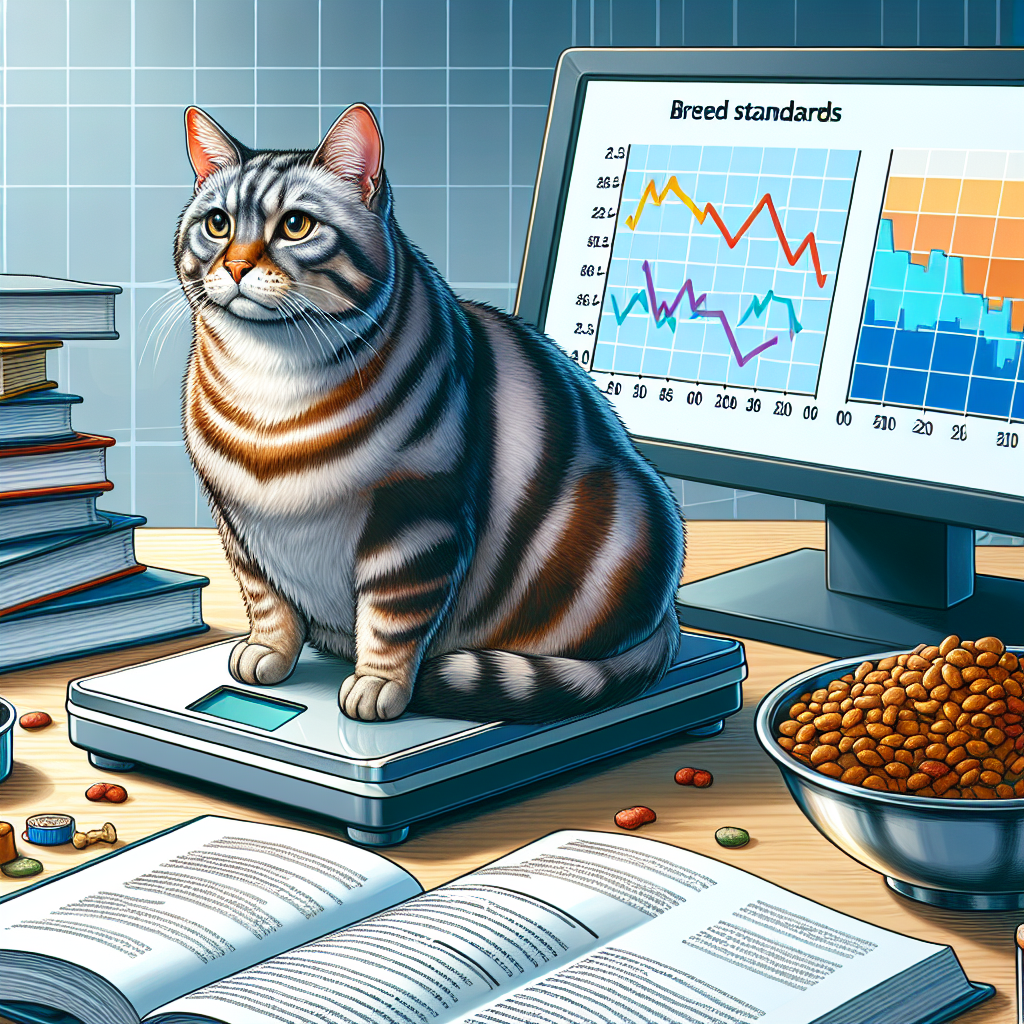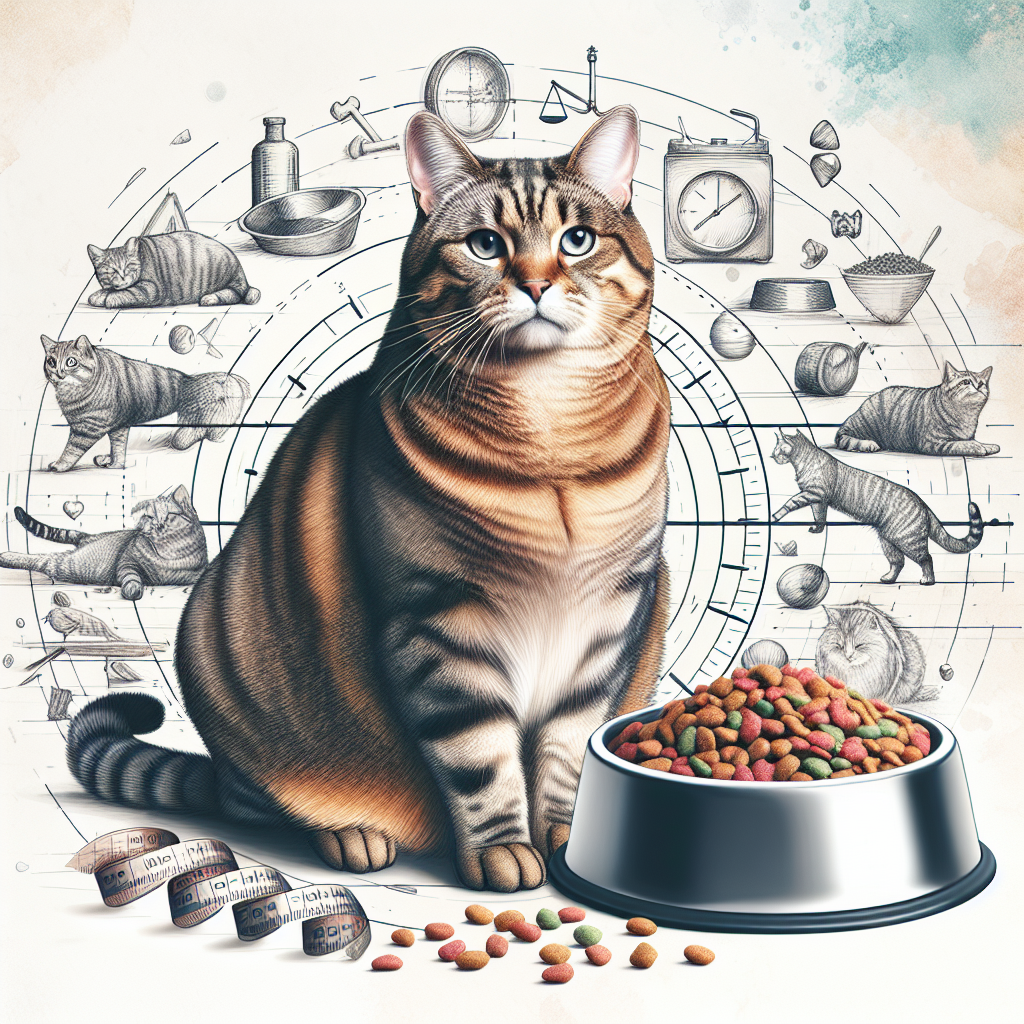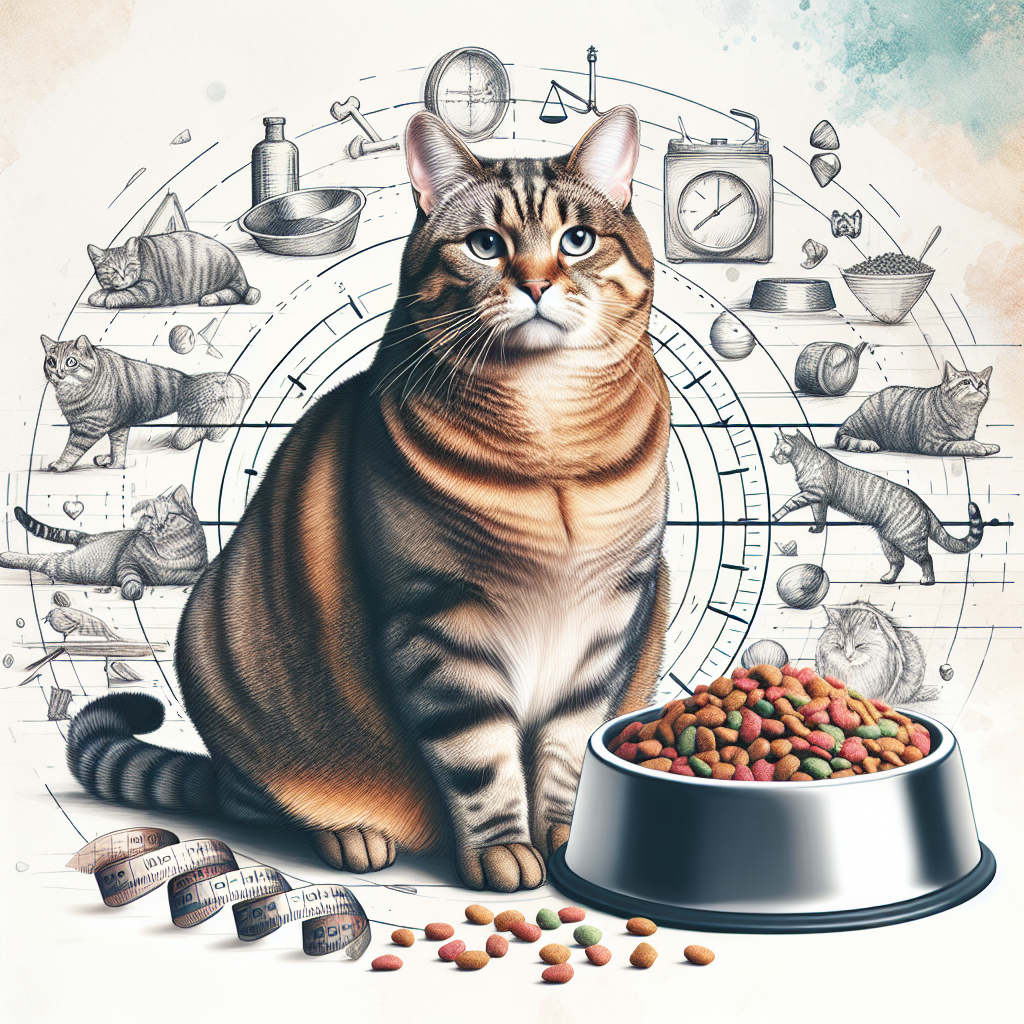Have you ever wondered what the perfect weight is for a big and cuddly North American tabby cat? Whether you have one by your side or are thinking of adopting one, determining the ideal weight for your feline friend is crucial for their overall health and well-being. In this article, we will explore the recommended weight range for these majestic creatures, ensuring that your furry companion remains happy and healthy for years to come.
Determining the ideal weight for a large North American tabby cat
Cats come in various shapes and sizes, and determining the ideal weight for a large North American tabby cat requires consideration of multiple factors. These factors include age, gender, nutrition and diet, activity level, and general health. Additionally, the influence of breed standards plays a role in determining the ideal weight range for tabby cats. By understanding these factors and considering the unique characteristics of your cat, you can ensure that they maintain a healthy weight.
Factors affecting the ideal weight
Age
The weight of a cat can vary depending on its age. During different stages of life, cats have different nutritional needs and activity levels, which can impact their weight. In the kitten stage, it is important to provide adequate nutrition for growth and development. As cats transition into adulthood, their weight may stabilize, and maintaining a healthy weight becomes crucial. During the senior stage, cats may have specific dietary requirements to support their aging bodies.
Gender
Gender can also influence a cat’s ideal weight. Male cats generally tend to be larger and heavier than their female counterparts. This is because males often have a greater muscle mass and bone density. However, it’s important to note that individual variations can exist within each gender, and factors such as neutering or spaying can affect a cat’s weight.
Nutrition and diet
Proper nutrition and diet are key factors in maintaining a cat’s ideal weight. Feeding guidelines should be followed to ensure that cats receive the appropriate amount of food. Additionally, understanding the caloric requirements of your cat based on their age, size, and activity level is crucial. Weight management diets may be recommended for overweight cats, as they aim to provide balanced nutrition while reducing caloric intake.
Activity level
The activity level of a cat plays a significant role in maintaining their weight. Indoor cats, who have limited opportunities for exercise, may be prone to weight gain if their caloric intake is not carefully monitored. On the other hand, outdoor cats have more opportunities for physical activity and may naturally maintain a healthier weight. Regular exercise and playtime can help cats burn calories and stay fit.
General health
A cat’s general health can affect their weight as well. Pre-existing conditions, such as thyroid disorders or diabetes, can cause weight fluctuations. It is important to monitor your cat’s weight regularly and consult with a veterinarian if any concerns arise. They can provide guidance and advice specific to your cat’s health needs.

Age
Kitten stage
During the kitten stage, rapid growth and development occur, and it’s important to provide adequate nutrition to support this. Kittens should be fed a balanced kitten formula specifically designed to meet their nutritional needs. Monitoring their weight and adjusting their food intake accordingly can help ensure they maintain a healthy weight during this crucial stage.
Adult stage
In the adult stage, a cat’s growth has typically stabilized. Maintaining a healthy weight is essential to prevent obesity-related health issues. Feeding an appropriate adult cat food and monitoring portions based on the feeding guidelines can help ensure your cat remains in the ideal weight range.
Senior stage
As cats enter their senior stage, their body’s metabolism changes, and their nutritional needs may differ. Senior-specific cat foods are available to support their aging bodies and help maintain a healthy weight. Regular vet check-ups and discussions about a senior cat’s specific dietary needs are recommended to ensure their weight and overall health are optimally managed.
Gender
Male
Male cats, on average, are larger and heavier than females. This is due to their typically larger muscle mass and bone structure. The ideal weight for a large male North American tabby cat may range between 10 to 16 pounds. However, it is essential to consider each individual cat’s unique characteristics and consult with a veterinarian for personalized recommendations.
Female
Female cats are generally smaller and lighter than males, but again, individual variations exist within each gender. The ideal weight range for a large female North American tabby cat may fall between 7 to 12 pounds. It is important to remember that these ranges are approximate and that each cat’s specific needs may vary.
Spayed/neutered cats
Spaying or neutering a cat can impact their weight. Neutered males and spayed females might be more prone to weight gain due to hormonal changes that can affect metabolism. Monitoring their weight closely and adjusting their diet or activity levels if necessary is crucial in maintaining their ideal weight.

Nutrition and diet
Feeding guidelines
Feeding guidelines provided by cat food manufacturers offer a starting point for determining the appropriate amount to feed your cat. These guidelines typically take into account the cat’s weight, age, and activity level. While they provide a useful baseline, it is important to monitor your cat’s weight and adjust the portions accordingly to ensure they maintain a healthy weight.
Caloric requirements
Understanding the caloric requirements of your cat can help you determine the appropriate amount of food to provide. These requirements can vary based on factors such as age, size, and activity level. Consulting with a veterinarian or a veterinary nutritionist can help you establish a proper feeding plan tailored to your cat’s individual needs.
Weight management diets
In cases where a cat is overweight or obese, weight management diets may be recommended. These diets are specifically formulated to provide balanced nutrition while reducing caloric intake. They often contain higher levels of protein and fiber, which can help cats feel satisfied while consuming fewer calories. It’s important to follow the guidance of a veterinarian when implementing a weight management diet.
Activity level
Indoor cats
Indoor cats have a more limited opportunity for physical activity compared to their outdoor counterparts. It is essential to provide stimulating environments and engage them in regular exercise and playtime. Interactive toys, scratching posts, and climbing structures can help keep indoor cats active. Allocating time for play sessions each day can help them burn calories and maintain a healthy weight.
Outdoor cats
Outdoor cats naturally have more opportunities for exercise, which can contribute to maintaining a healthy weight. They have the freedom to roam, chase prey (if applicable), and engage in physical activities that indoor cats may not have access to. However, it is still important to monitor outdoor cats’ weight and overall health, as they could still become overweight or develop health issues without proper supervision.
Exercise and playtime
Regardless of whether a cat is indoors or outdoors, providing regular exercise and playtime is crucial in maintaining their ideal weight. Engaging in interactive play sessions using toys such as feather wands or laser pointers can help cats burn calories and keep them mentally and physically stimulated. Additionally, dedicating time for daily exercise, such as supervised walks or harness training, can be beneficial for maintaining a healthy weight.
General health
Pre-existing conditions
Some cats may have pre-existing conditions that can contribute to weight fluctuations. Conditions such as thyroid disorders or diabetes can cause weight gain or loss. If you notice significant changes in your cat’s weight, it is important to consult with a veterinarian to rule out any underlying health issues and determine the best course of action.
Weight-related health issues
Excess weight can lead to various health issues in cats, including joint problems, heart disease, and diabetes. Monitoring and maintaining your cat’s weight within the recommended range can help prevent these conditions and improve their overall well-being. Regular check-ups with a veterinarian can help identify any weight-related concerns early on.
Veterinary advice
When determining the ideal weight for your large North American tabby cat, it is essential to consult with a veterinarian for personalized advice. They can assess your cat’s body condition, consider any underlying health conditions, and provide recommendations specific to your cat’s needs. Regular veterinary check-ups are crucial in monitoring your cat’s weight and ensuring they stay at their optimal weight range.
Influence of breed standards
Different tabby cat breeds
Tabby cats come in various breeds, each with its own distinct characteristics. Different breeds may have specific standards and expectations regarding weight. Examples of popular tabby cat breeds include the Maine Coon, American Shorthair, and Bengal. Understanding the breed of your tabby cat can help provide insight into their expected weight range.
Breed-specific weight range
Breed-specific weight ranges can vary among tabby cat breeds. For example, Maine Coons, known for their large size, can weigh between 15 to 25 pounds for males and 10 to 15 pounds for females. American Shorthairs typically weigh between 11 to 15 pounds for males and 8 to 12 pounds for females. It is important to research the specific breed standards for your tabby cat and consult with a veterinarian for guidance on maintaining their ideal weight.
Common weight range for large North American tabby cats
Weight range for males
For large male North American tabby cats, the common weight range may fall between 10 to 16 pounds. However, it is essential to remember that individual variations exist within each gender, and consulting with a veterinarian is the best way to determine the ideal weight for your specific cat.
Weight range for females
The common weight range for large female North American tabby cats may range between 7 to 12 pounds. However, just like with males, there can be variations due to individual characteristics and other factors. Regular monitoring and veterinary guidance can help ensure your cat maintains a healthy weight.
Considerations for mixed breed tabby cats
For mixed breed tabby cats, determining the ideal weight can be more challenging, as there are no specific breed standards to reference. In these cases, it is important to consider the cat’s body condition and consult with a veterinarian to determine the optimal weight range based on their specific characteristics and overall health.
Conclusion
Determining the ideal weight for a large North American tabby cat requires consideration of various factors, including age, gender, nutrition, activity level, general health, and even breed standards. By understanding these factors and consulting with a veterinarian, you can ensure your cat maintains a healthy weight. Regular monitoring, appropriate feeding guidelines, exercise, and veterinary care are key components in achieving the ideal weight for your furry companion. Remember, each cat is unique, so personalized advice from a veterinarian is crucial in maintaining their optimal weight range and overall well-being.

